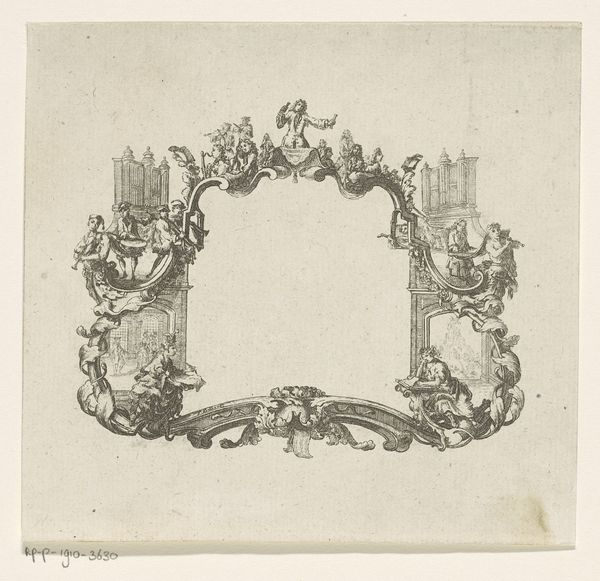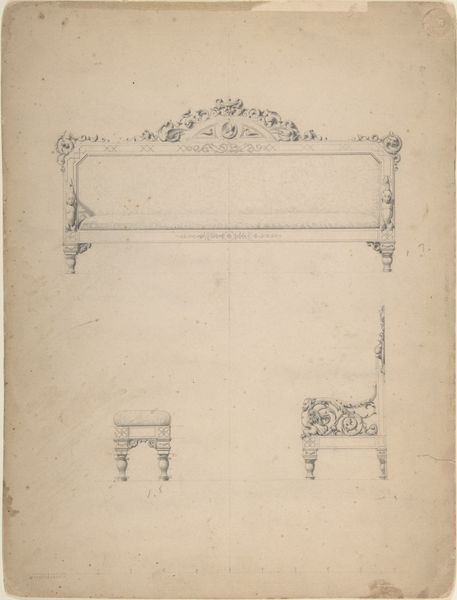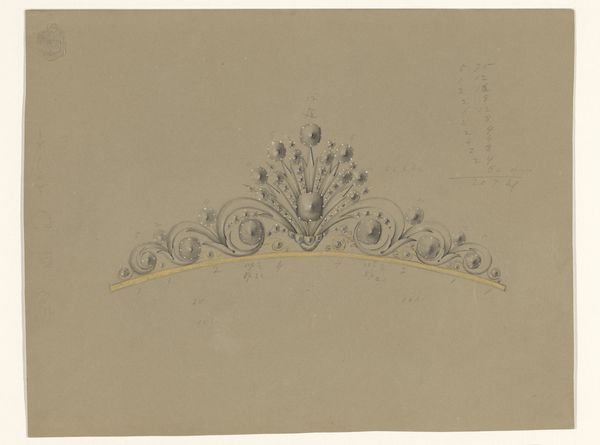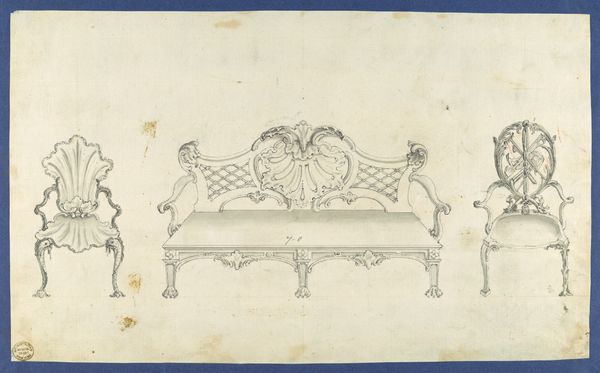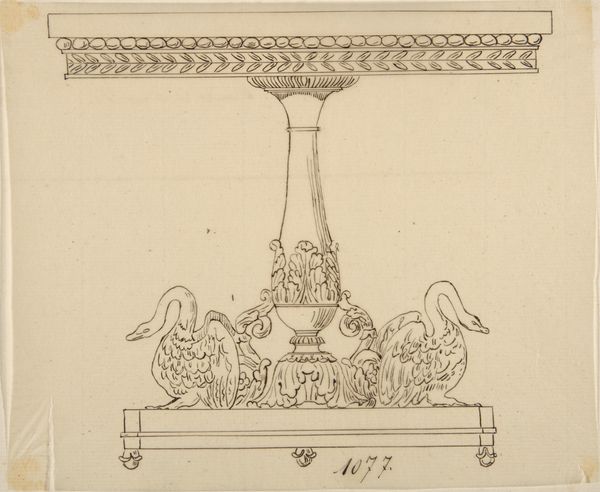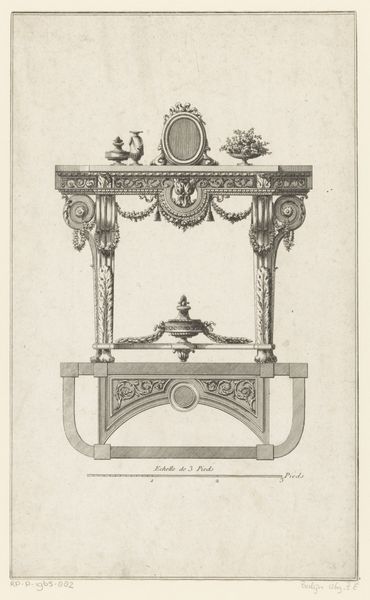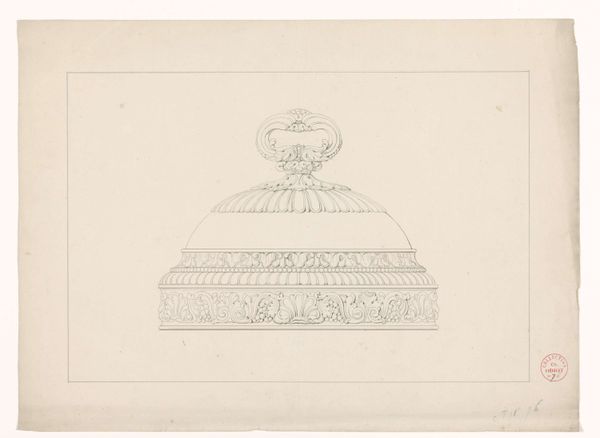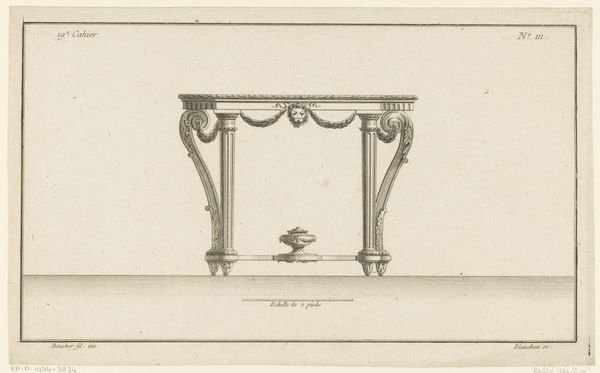
drawing, print, engraving, architecture
#
drawing
#
neoclacissism
# print
#
geometric
#
line
#
engraving
#
architecture
Dimensions: height 243 mm, width 323 mm
Copyright: Rijks Museum: Open Domain
Curator: Immediately, I'm struck by the fine lines, it’s so precise. It's almost architectural in its detail. Editor: That's because it is architectural! What we're looking at is an engraving, a print, and a drawing by Adrien Louis Marie Cavelier, titled "Kaptafel," or "dressing table," created in 1811. It’s a study of an object designed to exist within a space. Curator: Absolutely, the process behind an engraving of this nature, the craft involved, speaks volumes about the object’s intended status. The line work alone indicates a luxury good, beyond the reach of most. The level of geometric accuracy must require great precision, care, and a deep understanding of the properties of the materials being worked with. Editor: And this precision reflects the Neoclassical obsession with order and ideal forms. Think of the social context: post-Revolutionary France, a desire for stability, even in personal spaces. This wasn't just a table, but a statement of refined taste and status, designed and consumed within specific socio-political parameters. Curator: The almost ethereal quality of the figures around the mirror hints to an obsession with the materials it takes to construct these pieces, a material manifestation of class division, displayed and readily accessible for some, but an aspiration for most of that time. Editor: Yes, the print allows wider circulation of these aspirational ideals. It’s interesting how the visual representation impacts perceptions of objects like dressing tables; the imagery can normalize certain class structures, but can it invite critical engagement on the matter? The public role of prints in disseminating values shouldn’t be overlooked, but its influence always needs further discussion. Curator: It makes me wonder about the artisan's relationship to their craft and to these aspirations they’re materializing. The labor and skill... what kind of labor relations went into realizing the end product of this aesthetic exercise? Editor: Questions we can keep in mind as we contemplate Cavelier's meticulous piece. Thank you for that rich dive into materiality and historical insight! Curator: My pleasure! It’s fascinating to consider the socio-economic structures that produced such an object, captured here with such precision.
Comments
No comments
Be the first to comment and join the conversation on the ultimate creative platform.
